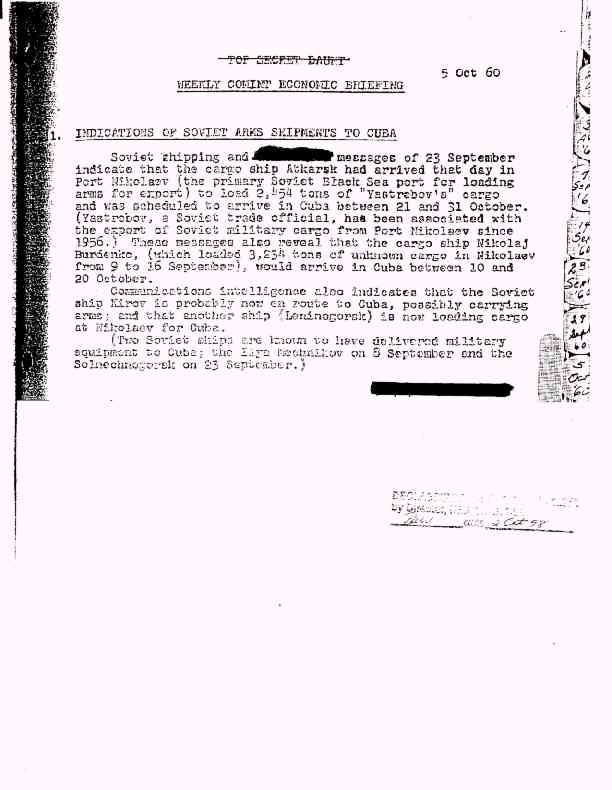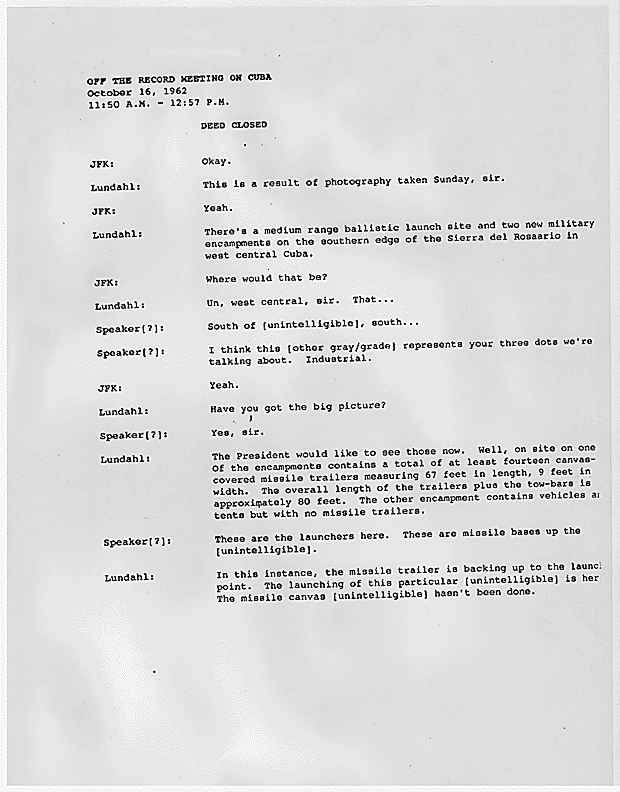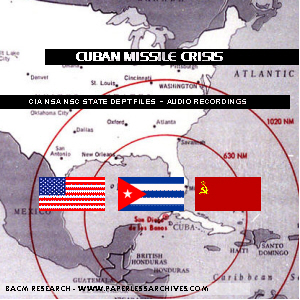|
330 pages of CIA files, intelligence reports, memoranda, background studies, dealing with the 1962 Cuban Missile Crisis. The collection in this volume includes many of CIA's most important documents on the Cuban missile crisis. It contains the "honeymoon cables" that Director of Central Intelligence (DCI) John A. McCone sent to Headquarters from France a month before he missile crisis, as well as McCone's notes taken during the National Security Council Executive Committee meetings at the height of the crisis. In the weeks immediately preceding the missile crisis, DC1 McCone was frequently out of town. During these times, his Deputy Director of Central Intelligence (DDCI), Lt. Gen. Marshall S. Carter, served as Acting Director. McCone was away from Washington on his honeymoon in France from the evening of 23 August through 23 September 1962. He left for Los Angeles on business on the evening of 11 October 1962, coming back late on 14 October. He returned to the West Coast on the afternoon of 15 October, immediately following news of the death of his stepson. The discovery of missiles in Cuba brought him back to Washington on the evening of 16 October, where he remained for the rest of the crisis.
Files also include intelligence memorandums and estimates, briefing papers, Cuban refugee reports, and memorandums on Operation MONGOOSE, the clandestine program aimed at destabilizing the Fidel Castro regime. Many of the evaluations of the missile threat were drawn from IRONBARK material, whose source was Soviet Col. Oleg Penkovsky.
179 pages of National Security Agency files covering the Cuban Missile Crisis. Files document NSA's human intelligence (HUMINT), photographic intelligence (PHOTINT), and signals intelligence (SIGINT) units intelligence coverage of Cuba and Soviet military support of Cuba. The signing of agreements with the Soviet Union and Czechoslovakia in mid-1960 was followed by a secret arms buildup in Cuba sponsored by the Soviets and their satellites. Early indications of that buildup came from signals intelligence, the exploitation of Soviet and Soviet Bloc communications that carried information related to the arms supply operations. Beginning late in 1960 and extending through 1961, NSA intercepted messages concerning Soviet ships headed for Havana. The cargo manifests were suspiciously blank, indicating that what they carried was more than just palm oil or farm equipment. Early in 1961, the ship Nikolay Burdenko arrived at the Cuban port of Mariel. The unloading operation was highly secret, but NSA caught Cubans discussing the arrival of tanks.
240 pages of Kennedy Administration White House containing various notations about, and transcripts of conversations concerning the Cuban Missile Crisis.
698 pages of text from the Department of States' "Foreign Relations of the United States," 1961-1963, Volume XI, covering the Cuban Missile Crisis and its aftermath. The Foreign Relations of the United States series presents the official documentary historical record of major foreign policy decisions and significant diplomatic activity of the United States. The series documents the facts and events that contributed to the formulation of policies and includes evidence of supporting and alternative views to the policy positions ultimately adopted.
The editors had complete access to all the retired records and papers of the Department of State. The editors of the Foreign Relations series also have full access to the papers of Presidents Kennedy, Johnson, and Eisenhower and other White House foreign policy records. Presidential papers maintained and preserved at the Presidential libraries include some of the most significant foreign affairs-related documentation from other federal agencies including the National Security Council, the Central Intelligence Agency, the Department of Defense, and the Joint Chiefs of Staff. Since 1991, the Central Intelligence Agency has provided expanded access to Department of State historians to high-level intelligence documents from those records in the custody of that Agency.
Collection also includes: 51 minutes of White House recordings concerning the Crisis and 21 aerial reconnaissance photos of Cuban sites. |


